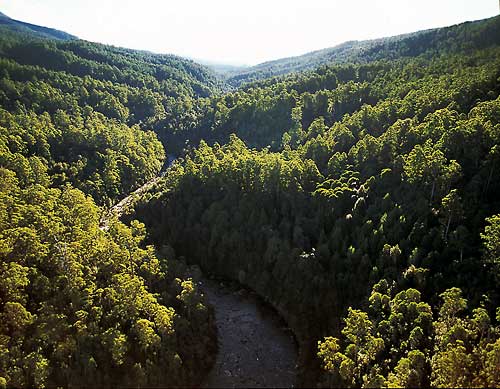Undisturbed native forests
(particularly Ash or Wet Sclerophyll) produce the most stable
stream flows with the greatest productivity and highest quality
water.
Mixed forests in excess of 200 years old and where fire has
been excluded, enable the greatest productivity of water.
 Lower Weld Valley, aerial view.
The whole viewfield, apart from a
Lower Weld Valley, aerial view.
The whole viewfield, apart from a
riparian strip, is couped up and zoned for logging.
 |
|
|
|
|
Old trees which
are deep rooting help pull moisture deep into the ground
and together with the deep litter on the forest
floor, causes much greater ground absorbtion, enabling
water to percolate out slowly thereby maintaining relatively
stable stream flows.
The leaf litter together with up to 2500 species of
mosses, fungi, lichens and bacteria living in that litter
play a vital part in breaking down organic matter into
nutrients and consuming the droppings of warm
blooded animals and in doing so ensure the water which
filters out from these forests is of the highest quality.
|
Those catchments which are described as
reforested, are in fact “green deserts” of vast mono-cultures
deprived of any variety of life forms and lack the ability to
provide a stable micro-climate and water production capacity.
|

